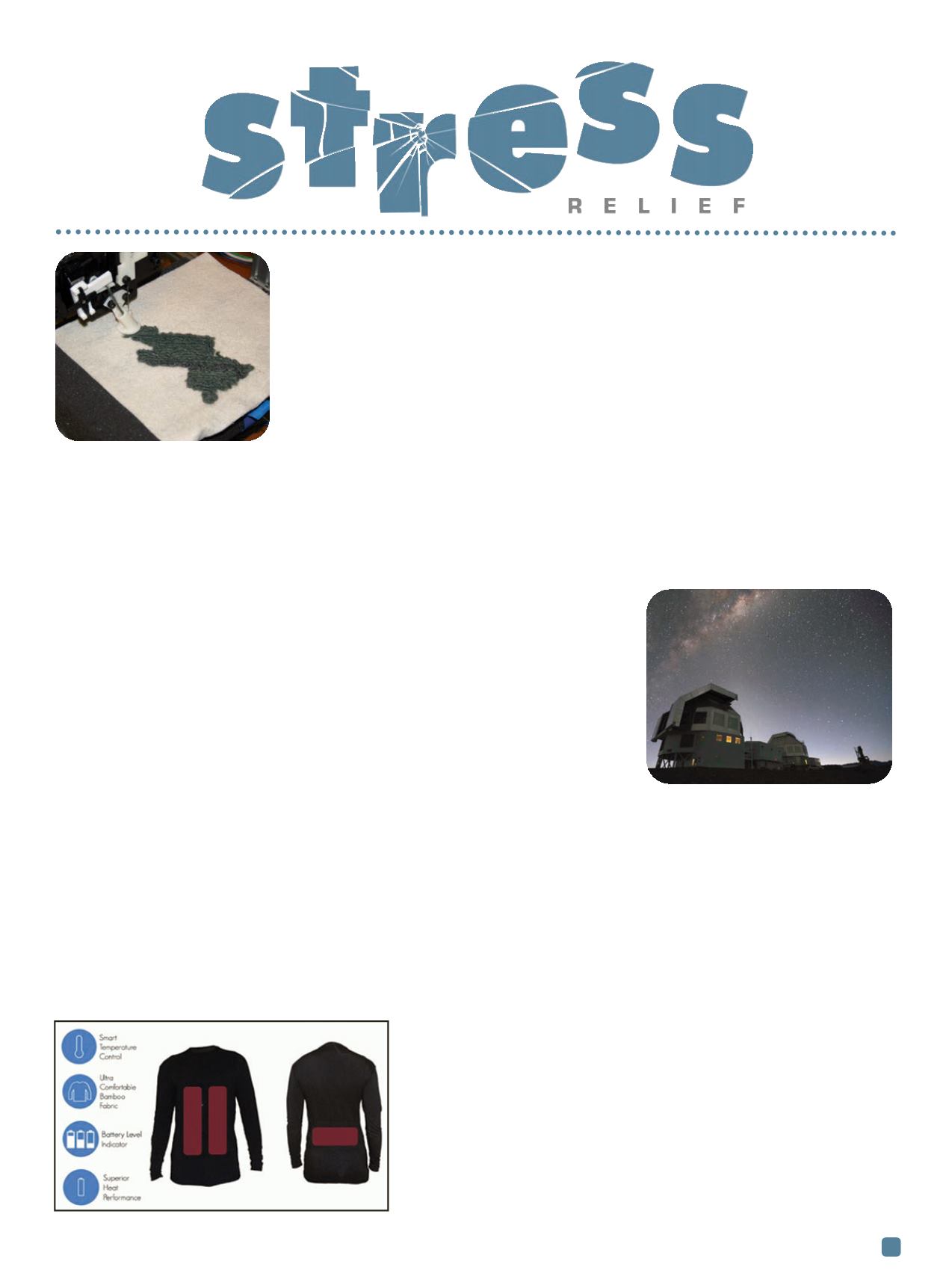

ADVANCED MATERIALS & PROCESSES •
NOVEMBER-DECEMBER 2014
75
3D print your kids to bed with these cuddly bears
A new type of printer developed by Carnegie Mellon University (CMU) and Disney
Research, both in Pittsburgh, can turn wool and wool blend yarns into fabric objects. The
device looks like a cross between a 3D printer and sewing machine and produces 3D
objects made of loose felt. Scott Hudson, a professor in CMU’s Human-Computer
Interaction Institute who developed the felting printer with Disney Research support, says
the results are reminiscent of hand-knitted materials.
“I really see this material being used for things that are held close,” explains Hudson.
“We’re really extending the set of materials available for 3D printing and opening up new
possibilities for what can be manufactured.” That could include apparel, accessories such
as scarves and hats, and even teddy bears. It also could be used to produce parts for soft
robots—those designed to touch or be near people.
The printer can make objects working directly from computerized designs and is able to rapidly
prototype objects and customize products. The machine operates like fused deposition modeling (FDM),
the most common process used in low-end 3D printers. In FDM printers, melted plastic is extruded in a
thin line into a layer; subsequent layers are added to achieve the object’s desired shape, with the layers
adhering to each other as the plastic cools. In the felt printer, yarn exits the printer head instead of lines of
melted plastic.
For more information: Scott Hudson,
scott.hudson@cs.cmu.edu,
cmu.edu,
disneyresearch.com.
3D printed teddy
bear made using a
new printer
developed by CMU
and Disney
Research.
Dwarf fossil galaxy offers clues to early universe
On the edge of the universe, 75,000 light years away, a galaxy known as Segue 1 is
the faintest ever detected. It only contains about 1000 stars and has a rare chemical
composition, with vanishingly small amounts of metallic elements present. Scientists,
including an astronomer at Massachusetts Institute of Technology (MIT), Cambridge, have
analyzed that chemical composition and gathered new insights into the evolution of
galaxies in the early stages of our universe.
Stars usually form from gas clouds and then burn up as supernova explosions after one
billion years, spewing more of the elements that are the basis for a new generation of star
formation. However, in contrast to all other galaxies, it appears that Segue 1’s process of
star formation halted at what would normally be an early stage of development.
“It’s chemically quite primitive,” says Anna Frebel, an assistant professor of physics
at MIT. “This indicates the galaxy never made that many stars in the first place. It tried
to become a big galaxy, but failed.” Because it remains in the same state, Segue 1 offers valuable information about the
conditions of the universe in its early phases. “It tells us how galaxies get started,” says Frebel. “It’s really adding
another dimension to stellar archaeology, where we look back in time to study the era of the first star and first galaxy
formation.”
For more information: Anna Frebel, 617.254.3917,
afrebel@mit.edu,
web.mit.edu.
Telescopes at Las Campanas Observatory,
Chile, where some research on Segue 1
was conducted. Courtesy of Anna Frebel.
Heated clothing just in time for winter
Were you slightly freezing last winter? So were Alex Huang and Jason Yakimovich, University of Toronto engineering
alumni. Then students slogging through bitter drifts to class, the two decided to take matters into their own hands by
inventing the world’s first intelligent heated base layer. In just six months, the two founded FuelWear and created a feather-
light and washable undershirt called the Flame Base Layer. The
garment can add 10°C to body temperature in -20°C weather for
three continuous hours. The shirt is made of bamboo fabric for its
antimicrobial properties and washability. Heating elements, sewn
into patches across the chest and back, are made of carbon fiber
and controlled by printed circuit boards. Rechargeable lithium-ion
batteries last for up to 12 hours of continuous outdoor use and LEDs
indicate battery life.
indiegogo.com/projects/fuelwear-the-first- smart-heated-base-layer.Flame Base Layer heated undershirt from FuelWear.


















